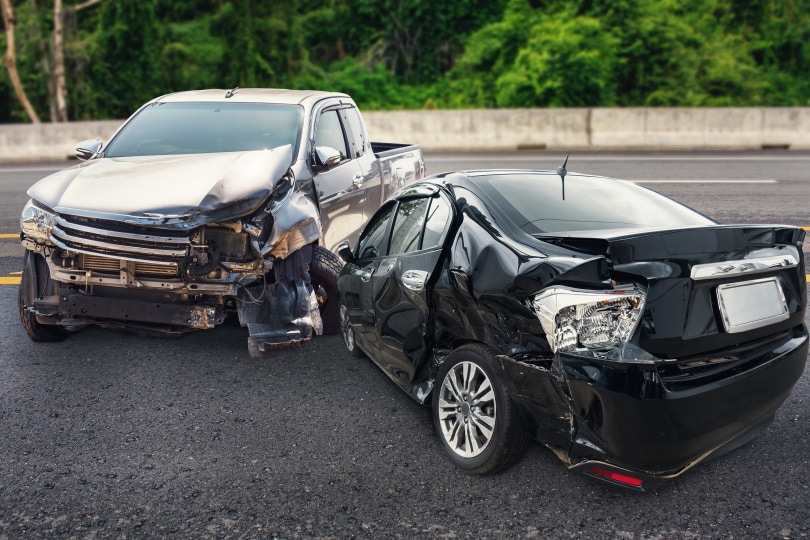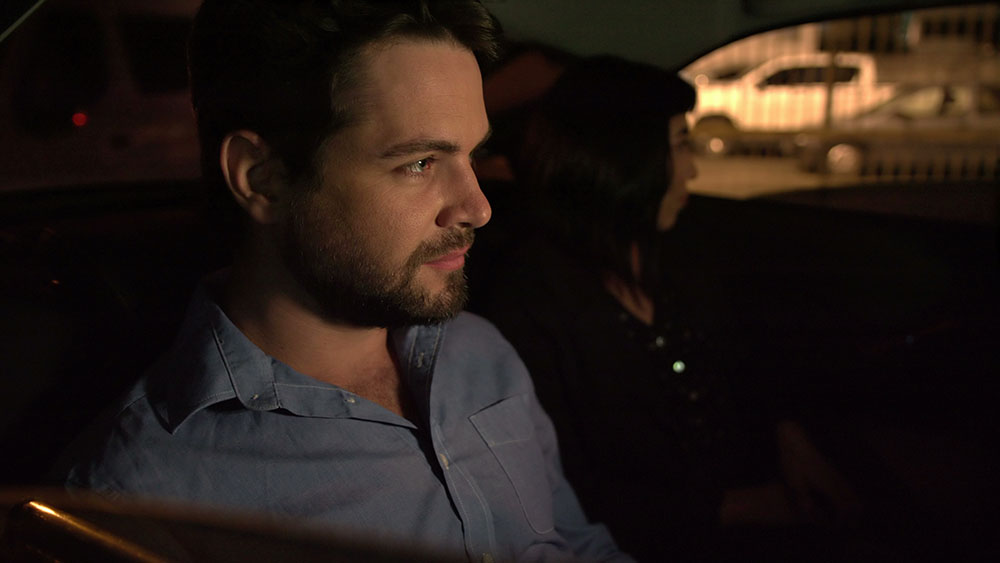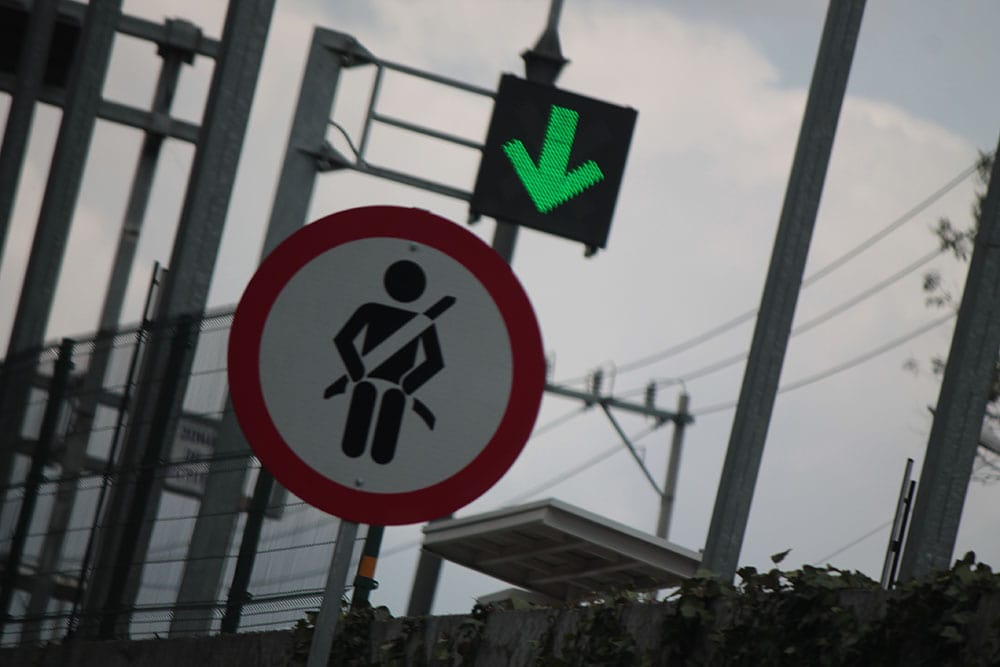9 Common Seatbelt Myths & Misconceptions: Expert & Safety Advice
-
Pete Ortiz
- Last updated:

Plenty of myths exist about the benefits of seatbelts. Misinformation occurs when the facts are inconvenient, and although more than 90% of Americans wear a seatbelt every time they get in the car, too many of us can’t stand the minor inconvenience of buckling up.
As a result, we downplay the statistics and make up common knowledge that aligns with our feelings, and excuses to forgo seatbelts emerge. When ideas like these strengthen and spread, drivers and passengers are put at risk.
Appreciating car safety is crucial to protecting you, your family, and everyone sharing the road. To give you a fresh perspective on seatbelts, let’s look at nine common myths and misconceptions about buckling up.
The 9 Common Seatbelt Myths & Misconceptions
1. Seatbelts can hurt you in a crash

Many people think seatbelts are uncomfortable, and some even argue that they can be more harmful than helpful in a crash.
From one perspective, these claims aren’t inaccurate. Seatbelt syndrome is a range of injuries resulting from car restraints. At high speeds, the force of a seatbelt can cause anything from minor abrasions and bruising to spinal fractures.
It can be a scary prospect, but it also ignores the consequences of not wearing a seatbelt. While a nylon strap clutching your torso at 65 miles an hour won’t feel incredible, the tandem of a glass windshield followed by highway asphalt could hardly be described as downy soft.
The truth is, seatbelts save lives, and the potential injuries are far less severe when wearing one. According to the NHTSA, seatbelts in the front seat reduce the risk of moderate to critical injuries by 50% and fatal injuries by 45%.
2. Seatbelts aren’t necessary for short drives
The logic seems valid that the longer you spend in the car, the higher the chances of getting in an accident. If you’re only running down the street for a minute, a seatbelt probably won’t make that much a difference, right?
Unfortunately, that’s not true, according to one study that analyzed the proximity of traffic accidents to the homes of those involved. The median distance of the location of the injury from the person’s house was only 4.6 miles. Among fatal collisions, the median was only 5.5 miles.
Another study had similar findings, indicating a “close to home” effect. Researchers found a greater probability of distracted driving or alcohol-related crashes, contending that familiarity with the roads may be a factor in the increase in accidents.
3. Airbags are enough to protect you in a crash

Airbags were a boon to safety-minded drivers when they became required on every vehicle in 1998. In 2017 alone, the NHTSA estimated that airbags were responsible for 2,790 saved lives. They offer tremendous benefits, and like seatbelts, they’re safer to keep on than off.
Despite their value, airbags are also not enough to protect you in an accident. According to a study published in the American Journal of Orthopedics, airbags plus seatbelts reduced mortality by 67%, much better than the 45% reduction from seatbelts alone.
But airbags without seatbelts? The mortality rate reduction plummets to 32%.
4. You can be too large to wear a seatbelt
Seatbelts can be at least somewhat uncomfortable to anyone, but for some people, their size prohibits them from wearing one entirely. If it can’t fit, it’s hard to expect someone to put a seatbelt on. Many state laws even forgive seatbelt violations for valid medical reasons.
Can being overweight excuse you from buckling up?
In general, being overweight isn’t a sound reason to avoid wearing a seatbelt. The NHTSA suggests a seatbelt extender to achieve a comfortable yet snug fit. An extender is an adapter that pulls the buckle out a few extra inches.
Experts do not recommend seatbelt extenders for child booster seats, but if you want a longer seatbelt, contact your car’s manufacturer for information on compatible options.
5. It’s safe to ride without a seatbelt in the back seat

Many people perceive the back seat to be safer than the front seat, and it makes sense that only roughly 80% of adults buckle up in the back versus more than 90% in the front. In some states, the laws don’t stress back seat seatbelt use and only include verbiage for adults in front of the vehicle.
With the lack of urgency, it’s only logical to assume that the back seat truly is safer. But according to the IIHS, that couldn’t be further from the truth. Lap and shoulder belts can reduce the chance of fatality by 58% in the middle rear seat, while lap belts alone can reduce the risk by 32% for backseat passengers.
It isn’t the rear-seat passengers alone who are safer when they buckle up. In a head-on collision, the risk of a belted driver dying also increases by a whopping 137% when the person behind them isn’t wearing a seatbelt.
6. Pregnant women should not wear a seatbelt
The force of a strap can be downright damaging in an accident, and many women worry about the effect it could have while they’re pregnant. But whether you’re pregnant or not, doctors and the NHTSA advise everybody to wear a seatbelt and keep the airbags enabled.
When worn properly, a seat belt will not put undue pressure on a fetus, even during a sudden stop. The lap belt should sit over the thighs and the shoulder harness above the stomach, keeping it protected in an accident.
7. You won’t get hurt if you drive a big vehicle

Some people justify their poor seatbelt habits by arguing that their vehicle is big enough to keep them safe if they get into an accident. The theory is especially prevalent among pickup drivers, who often show the lowest compliance.
Although pickups may be larger than many other passenger vehicles on the road, they are no safer in the event of an accident. In some ways, they can even be more dangerous. Pickups are two times more likely to roll over in a fatal crash. When that happens, a seatbelt can increase your survival odds by an incredible 80%.
8. Seatbelts could trap you in a car
Although it takes about a second to undo a belt buckle, a common concern is that a seatbelt might trap you in a dangerous situation. If the car is on fire or submerged in water, a seatbelt could become a death sentence.
It’s a fair reason until you consider a University of Michigan study from the 1980s that tested the idea against three years of the state’s accident data. Should you worry about being trapped in a car that’s on fire or submerged? Not according to the study’s findings, revealing seatbelt users were far less likely to die in these situations.
Part of this is possibly because seatbelts can help you retain consciousness in case of an accident. Indeed, the Michigan study found that seatbelt users were more than two times less likely to lose consciousness than unbuckled riders in a crash.
9. Not wearing a seatbelt is illegal

It seems that no matter where you go, it’s your legal responsibility to buckle up. In most states, you can get pulled over and ticketed solely for not wearing a seatbelt, and enforcement continues to get stricter. However, if you make a lifestyle out of staying unbuckled, there is one quiet sanctuary for drivers like you—New Hampshire.
It’s appropriate that the one place that doesn’t have adult seatbelt laws is the “Live Free or Die” state, despite the irony that living free, in this case, is more likely to also kill you. Regardless, adults over 18, whether in the front seat or rear seat, do not have to wear seatbelts.
Like every state, New Hampshire has a primary seatbelt law and child restraint law for children under 18. An unbuckled child will earn drivers a $50 ticket for a first offense and a $100 ticket for a second.
Conclusion
You can complain about it all day, but there’s no denying that buckling up is a wise decision. Seatbelts alone save nearly 15,000 lives every year. The safety they provide is worth some minor discomfort and then some, and your loved ones will appreciate the effort if an accident occurs.
- See also: What Is a Seatbelt Pretensioner?
Featured Image Credit: Prostock-studio, Shutterstock
Contents


